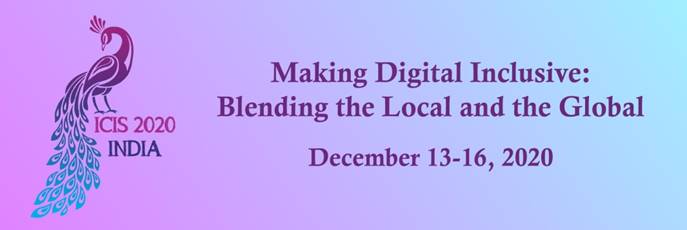Digitization in Cities and the Public Sector
Loading...
Paper Type
Complete
Paper Number
2000
Description
An increasing number of public services is delivered primarily via digital channels, however, a pressing problem is that they are frequently avoided or even rejected by marginalized citizens, such as people with disabilities. In this paper, we develop a contextualized framework of digital public service avoidance by people with disabilities that builds on and extends prior information systems research by incorporating complexity as the main antecedent of avoidance but it also leverages findings from social psychology and sociology by incorporating the need for human interaction and stigma consciousness as unique sociocultural barriers. We apply the framework to the context of a digital public service specifically developed for people with disabilities and assess its utility in a quantitative study of 145 severely disabled citizens. Our results uncover the need for interaction as a novel and underexplored driver of avoidance, illustrating that the missing “human touch” may be a hidden barrier to bringing more marginalized citizens online.
Recommended Citation
Pethig, Florian; Jaeger, Lennart; Kroenung, Julia Sarah; and Buchwald, Arne, "Digital Public Service Avoidance by People with Disabilities" (2020). ICIS 2020 Proceedings. 7.
https://aisel.aisnet.org/icis2020/digitization_in_cities/digitization_in_cities/7
Digital Public Service Avoidance by People with Disabilities
An increasing number of public services is delivered primarily via digital channels, however, a pressing problem is that they are frequently avoided or even rejected by marginalized citizens, such as people with disabilities. In this paper, we develop a contextualized framework of digital public service avoidance by people with disabilities that builds on and extends prior information systems research by incorporating complexity as the main antecedent of avoidance but it also leverages findings from social psychology and sociology by incorporating the need for human interaction and stigma consciousness as unique sociocultural barriers. We apply the framework to the context of a digital public service specifically developed for people with disabilities and assess its utility in a quantitative study of 145 severely disabled citizens. Our results uncover the need for interaction as a novel and underexplored driver of avoidance, illustrating that the missing “human touch” may be a hidden barrier to bringing more marginalized citizens online.
When commenting on articles, please be friendly, welcoming, respectful and abide by the AIS eLibrary Discussion Thread Code of Conduct posted here.


